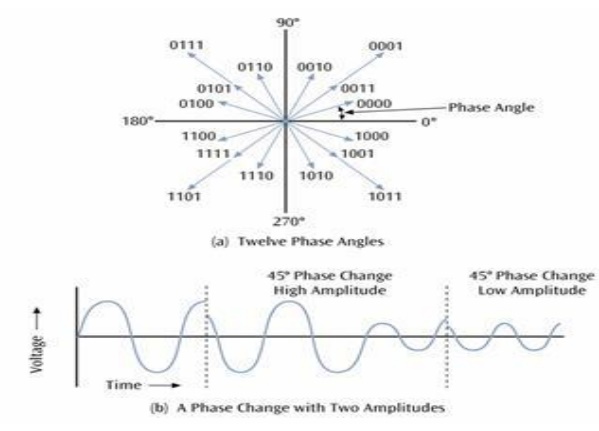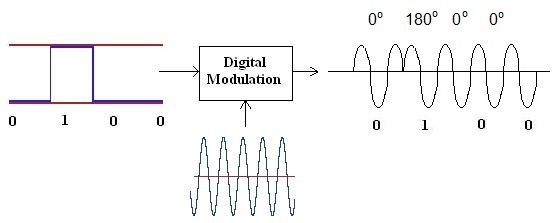

This book is a treatise on digital modulation theory, with an emphasis on these more recent innovations. Found insideThe last ten years have seen a great flowering of the theory of digital data modulation. Both frequency and phase remain constant while the amplitude changes. So in Frequency Shift Keying (FSK), we have two types of frequencies of the carrier wave, low frequency for the transmission of '0' and high frequency for the transmission of '1'. So the basic concept is, we do not transmit the carrier wave when the digital input signal is '0', and transmit the sinusoidal carrier as it is, for digital input signal '1'.

If the frequency of sinusoidal carrier wave is varied (switched) as per the digital input signal, then it is known as the frequency shift keying (FSK). In continuous wave modulation, the message signal is of analog nature but in digital modulation, the message signal is of digital nature (Binary or M-ary encoded version). The most fundamental digital modulation techniques are based on keying: PSK (phase-shift keying): a finite number of phases are used. From the review of the Third Edition: "A must for anyone in volved in the practical aspects of the telecommunications industry." -CHOICE Outlines the expertise essential to the successful operation and design of every type of. Differential phase shift keying (DPSK) Frequency shift keying (FSK) Amplitude shift keying (ASK) Less complex than coherent detection but has worse performance. Phase shift keying is analogous to Phase Modulation (analog phase modulation). Three basic digital modulation techniques Amplitude-shift keying (ASK) - special case of AM Frequency-shift keying (FSK) - special case of FM Phase-shift keying (PSK)shift keying (PSK) - special case of PMspecial case of PM Will use signal space approachin receiver design and performance analysis 2009/2010 Meixia Tao SJTU 3 performance analysis %PDF-1.2 %���� examples of Digital Modulation Techniques.
#Error probability ask fsk psk software#
0000000576 00000 n In addition, a single demodulator software will be used for all the digital modulation signals including the amplitude shift keying (ASK), the frequency shift keying (FSK), and the phase-shift keying (PSK). x�b```f``��������A��X�M�J, The phase shift keying is very much similar to Phase Modulation (PM), because in both of these modulation techniques, the phase of the carrier wave is changed, according to the instantaneous value of the modulating signal. No phase shift takes place when two two successive (back to back) 1's or two successive 0's are to be transmitted (as per the image).

In this image, observe the phase shift of 180 degrees takes place in the carrier wave at three places. The carrier signal is then modulated among the members of a set of discrete values to transmit information. ( f 1 and f 2) are used and symbols 1 and 0 are represented. The selection of a digital modulation technique for a specific application depend not only the bandwidth efficiency and implementation complexity but. , the information of the digital input signal is present in the frequency variations of the carrier wave.

Amplitude Shift Keying (ASK) is a type of Amplitude Modulation which represents the binary data in the form of variations in the amplitude of a signal. Last time, we talked about two analog modulation methods: AM and FM.Today we will talk about three types of digital modulation: Amplitude Shift Keying (ASK). 158 0 objstream (a variation of FSK) IS-54: π/4-DQPSK modulation is used (a variation of PSK) J.4 The modulation process making the transmission possible involves switching (keying) the amplitude, frequency, or phase of a sinusoidal carrier in accordance with the incoming data.


 0 kommentar(er)
0 kommentar(er)
